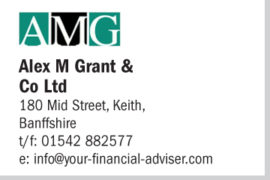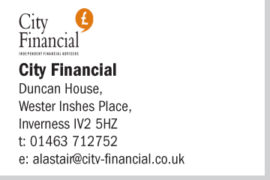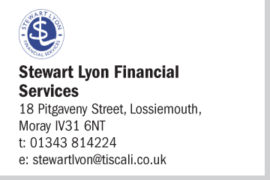INDEPENDENT FINANCIAL ADVICE ON MONEY MATTERS AROUND THE HIGHLANDS, ISLANDS & MORAY
One of the most common misconceptions in investing is the difference between volatility and risk.
Many people treat them identically, which is a mistake that is often caused by watching your stock portfolio too closely.
In one sense, this is perfectly understandable. The stock market is a risky place to be in the short term and watching the value of your life savings jump around from day to day can be unsettling.
At best this can lead to unnecessary stress and worry and at worst it can create a detrimental financial loss.
Therefore, it is pivotal that investors understand the difference between the two.
What is volatility and risk?
Volatility is backward looking, whereas risk is forward looking.
At its simplest, volatility is merely how quickly or significantly an investments share price can fluctuate over a period of time.
In volatile periods, share prices swing sharply up and down, whilst in less volatile periods they have a smoother, more predictable performance.
Risk on the other hand is the chance of investments declining in value.
If you are worried about the “risk level” of a certain investment, you are concerned about a potential permanent loss of your money and the possibility that your future return may not match the expected return.
The amount of investment risk you’re willing to undertake depends on a range of factors – most notably how long you’re investing for.
Taking the long view
Just because an investment is more volatile does not necessarily mean it is more risky in the long term.
As an investment’s time horizon gets longer, the effect of volatility is reduced greatly. Investing in the stock market requires a long-term perspective.
Historically, it has shown that over periods of ten or more years, equities have generally outperformed cash.
To reference, if you had put £100 in a cash account in May 1996, it would have grown to £128 by 7 April 2021 – after adjusting for inflation. This is a gain of just 28%2 .
In contrast, if you had invested £100 in the FTSE 100 over the same period, it would have increased by 284% to £384 – assuming dividends were reinvested and after adjusting for inflation.
From Brexit to the coronavirus pandemic, the past four years alone have seen strong and frequent market reactions.
March 2020 saw significant crashes in the stock market, similar to the 2008/2009 financial crisis. The spread of the Covid-19 virus lead to global fears of recession and investors who took a short-term view, may well have made a loss.
The key is to remember that over the long term, share price values tend to bounce back.
For example, stock markets in the US and Europe hit record highs in March and April 2021, just a year after the pandemic struck the western world!
How to benefit from Market Volatility
Volatility can be a powerful force for good because these wild “swings” mentioned above, work both ways.
Assuming your investments are in the low-risk variety, you can actually make more money from higher volatility compared to lower volatility.
All else being equal, volatility is a good thing for experienced investors as volatility is what creates opportunity.
Research has shown that being out of the market for only the five best days during the past 30 years would have led to a 33% lower return.
Missing the best ten days would have reduced returns by a staggering 49%.
So, while stock market volatility may be stressful, history shows it is better to stay invested in turbulent times because long-term returns may typically outweigh short-term losses.
A financial adviser can help you avoid knee-jerk reactions by investing objectively and rationally.
By staying calm and focusing on the long term, you’ll reduce your chances of making a potential costly mistake.
Next month’s topic is on Investment
Contact your local Independent Financial Advisers for a no obligation initial discussion. Click to visit their website:






